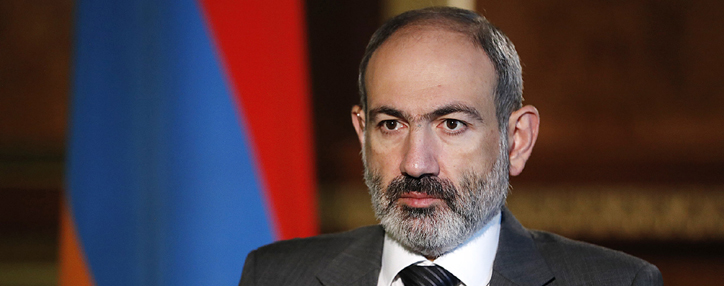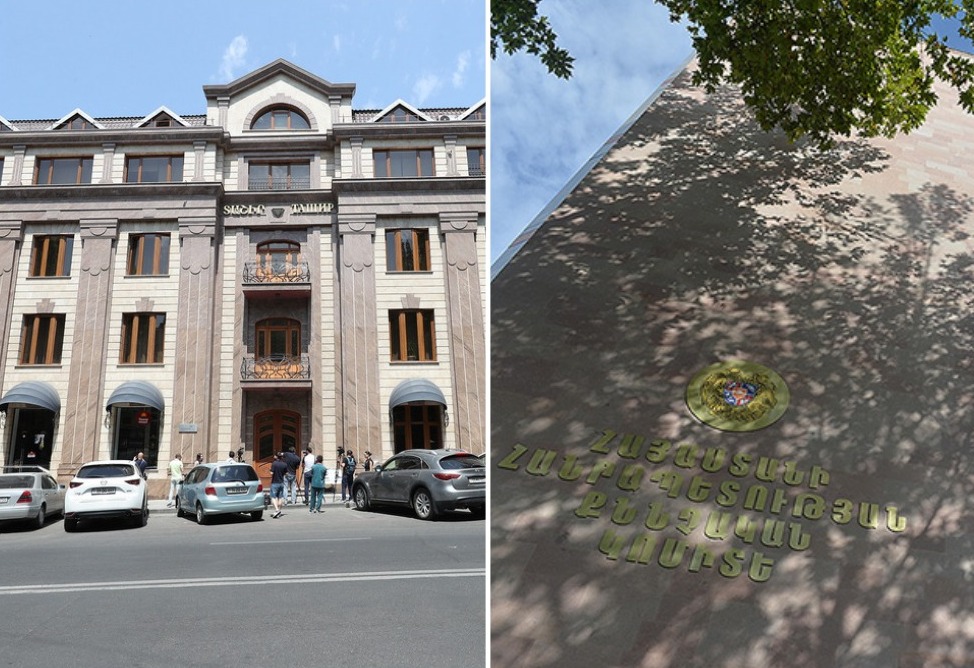Deployment of Russian peacekeepers in Karabakh conflict region acceptable to Armenian side - Pashinyan
22.10.2020,
22:53
The deployment of peacekeepers in the Karabakh conflict region is acceptable to the Armenian side, and it could be Russian peacekeepers, Armenian Prime Minister Nikol Pashinyan said in an interview with Interfax on Thursday.

YEREVAN, October 22. /ARKA/. The deployment of peacekeepers in the Karabakh conflict region is acceptable to the Armenian side, and it could be Russian peacekeepers, Armenian Prime Minister Nikol Pashinyan said in an interview with Interfax on Thursday.
"The deployment of peacekeepers is acceptable to us. I can say that Azerbaijan's views on the composition of peacekeepers will not coincide with Armenia's views on this matter. If we talk about compromises, the presence of Russian peacekeepers can also become a compromise version. The Russian Federation has good relations either with Azerbaijan or with Armenia. It is very important to reckon with the views of other regional countries, it is important that specific peacekeeping forces stabilize the region, and not vice versa," Pashinyan said in his interview.
War in Artsakh
On September 27, at 07:10, Azerbaijani troops launched an offensive along the entire length of the contact line in Artsakh, but were thrown back in several directions. Intense fighting continues in the south, southeast and north of the front line. Turkey joined the aggression. Residential areas are being shelled as well.
Azerbaijan is supported by the Turkish Armed Forces and foreign mercenary terrorists recruited by it. The Turkish-Azerbaijani aggression encounters a decisive rebuff from the Armenian Armed Forces along the entire frontline.
The Azerbaijani side suffered losses in manpower (more than 6,459 people killed and thousands wounded) and equipment, in particular, 202 UAVs, 4 units of TOS – 1A, 4 Smerch and Uragan MLRS, more than 580 tanks and other armored vehicles, 16 helicopters and 23 aircraft. According to the data of the defense ministry of Armenia and Artsakh, more than 825 Armenian servicemen were killed and hundreds wounded on the Armenian side. Also 37 civilians were killed and more than 116 wounded on the Armenian side.
On October 9, following the meeting of the foreign ministers of Armenia and Azerbaijan, Zohrab Mnatsakanyan and Jeyhun Bayramov, with the mediation of Russian Foreign Minister Sergei Lavrov, an agreement was reached on a ceasefire from 12:00 on October 10 for humanitarian purposes for the exchange of prisoners of war and the bodies of the dead. Armenia and Azerbaijan, with the mediation of the OSCE Minsk Group co-chairs, on the basis of the basic principles of the settlement, are starting substantive negotiations with the aim of achieving a peaceful settlement as soon as possible. Two times humanitarian ceasefire agreements were reached, but Azerbaijan violated the ceasefire by opening fire at the opposite side and carrying out rocket attacks on residential areas.
Martial law and general mobilization were declared in Artsakh and Armenia. --0--
"The deployment of peacekeepers is acceptable to us. I can say that Azerbaijan's views on the composition of peacekeepers will not coincide with Armenia's views on this matter. If we talk about compromises, the presence of Russian peacekeepers can also become a compromise version. The Russian Federation has good relations either with Azerbaijan or with Armenia. It is very important to reckon with the views of other regional countries, it is important that specific peacekeeping forces stabilize the region, and not vice versa," Pashinyan said in his interview.
War in Artsakh
On September 27, at 07:10, Azerbaijani troops launched an offensive along the entire length of the contact line in Artsakh, but were thrown back in several directions. Intense fighting continues in the south, southeast and north of the front line. Turkey joined the aggression. Residential areas are being shelled as well.
Azerbaijan is supported by the Turkish Armed Forces and foreign mercenary terrorists recruited by it. The Turkish-Azerbaijani aggression encounters a decisive rebuff from the Armenian Armed Forces along the entire frontline.
The Azerbaijani side suffered losses in manpower (more than 6,459 people killed and thousands wounded) and equipment, in particular, 202 UAVs, 4 units of TOS – 1A, 4 Smerch and Uragan MLRS, more than 580 tanks and other armored vehicles, 16 helicopters and 23 aircraft. According to the data of the defense ministry of Armenia and Artsakh, more than 825 Armenian servicemen were killed and hundreds wounded on the Armenian side. Also 37 civilians were killed and more than 116 wounded on the Armenian side.
On October 9, following the meeting of the foreign ministers of Armenia and Azerbaijan, Zohrab Mnatsakanyan and Jeyhun Bayramov, with the mediation of Russian Foreign Minister Sergei Lavrov, an agreement was reached on a ceasefire from 12:00 on October 10 for humanitarian purposes for the exchange of prisoners of war and the bodies of the dead. Armenia and Azerbaijan, with the mediation of the OSCE Minsk Group co-chairs, on the basis of the basic principles of the settlement, are starting substantive negotiations with the aim of achieving a peaceful settlement as soon as possible. Two times humanitarian ceasefire agreements were reached, but Azerbaijan violated the ceasefire by opening fire at the opposite side and carrying out rocket attacks on residential areas.
Martial law and general mobilization were declared in Artsakh and Armenia. --0--



